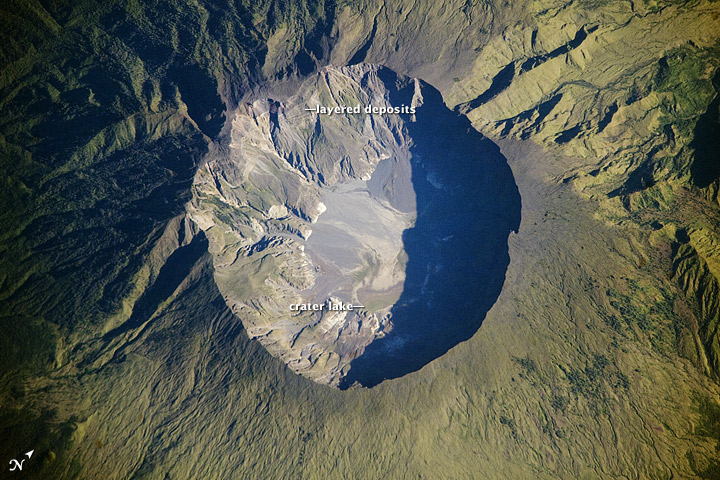
The Greatest Eruption in Human History: Mount Tambora

On April 10, 1815, the Indonesian volcano of Mount Tambora exploded in the largest eruption in recorded history.
On the Volcanic Explosivity Index (VEI), a classification system akin to the scale used to rate earthquakes, the Tambora eruption rate a VEI-7. The scale runs from 1 to 8, with each number being approximately 10 times more powerful than the previous one. There haven't been any VEI-8s in the last 10,000 years. The Tambora eruption killed at least 88,000 people.
The massive eruption — heard on Sumatra Island, more than 1,200 miles (1,930 km) away — spewed an estimated 36 cubic miles (150 cubic kilometers) of tephra — exploded rock and ash — into the air. Ash from the eruption was recognized at least 808 miles (1,300 km) away to the northwest, according to a NASA statement.
So much ash was injected into the Earth's atmosphere and circulated by upper-level currents that it blocked some of the sun's rays, causing global temperatures to lower and making 1816 the so-called "year without a summer."
An astronaut aboard the International Space Station captured this image of the summit caldera of Mount Tambora in March 2009.
The huge caldera — 3.7 miles (6 km) in diameter and 3,609 feet (1,100 meters) deep — formed when the eruption removed Tambora's estimated 13,123-foot-high (4,000 m) peak and the magma chamber below emptied.
Today, an ephemeral freshwater lake occupies part of the summit crater, as do minor lava flows and domes from throughtout the 19th and 20th centuries. Active fumaroles, or steam vents, are still found in the caldera.
Sign up for the Live Science daily newsletter now
Get the world’s most fascinating discoveries delivered straight to your inbox.
In 2004, scientists discovered the remains of a village, and two adults buried under nearly 10 feet (3 m) of ash in a gully on volcano's flank — remnants of the former Kingdom of Tambora preserved by the 1815 eruption that destroyed it. The similarity of the Tambora remains to those associated with the eruption of Mount Vesuvius in the year 79 has led to the Tambora site's description as "the Pompeii of the East," according to the NASA statement.










